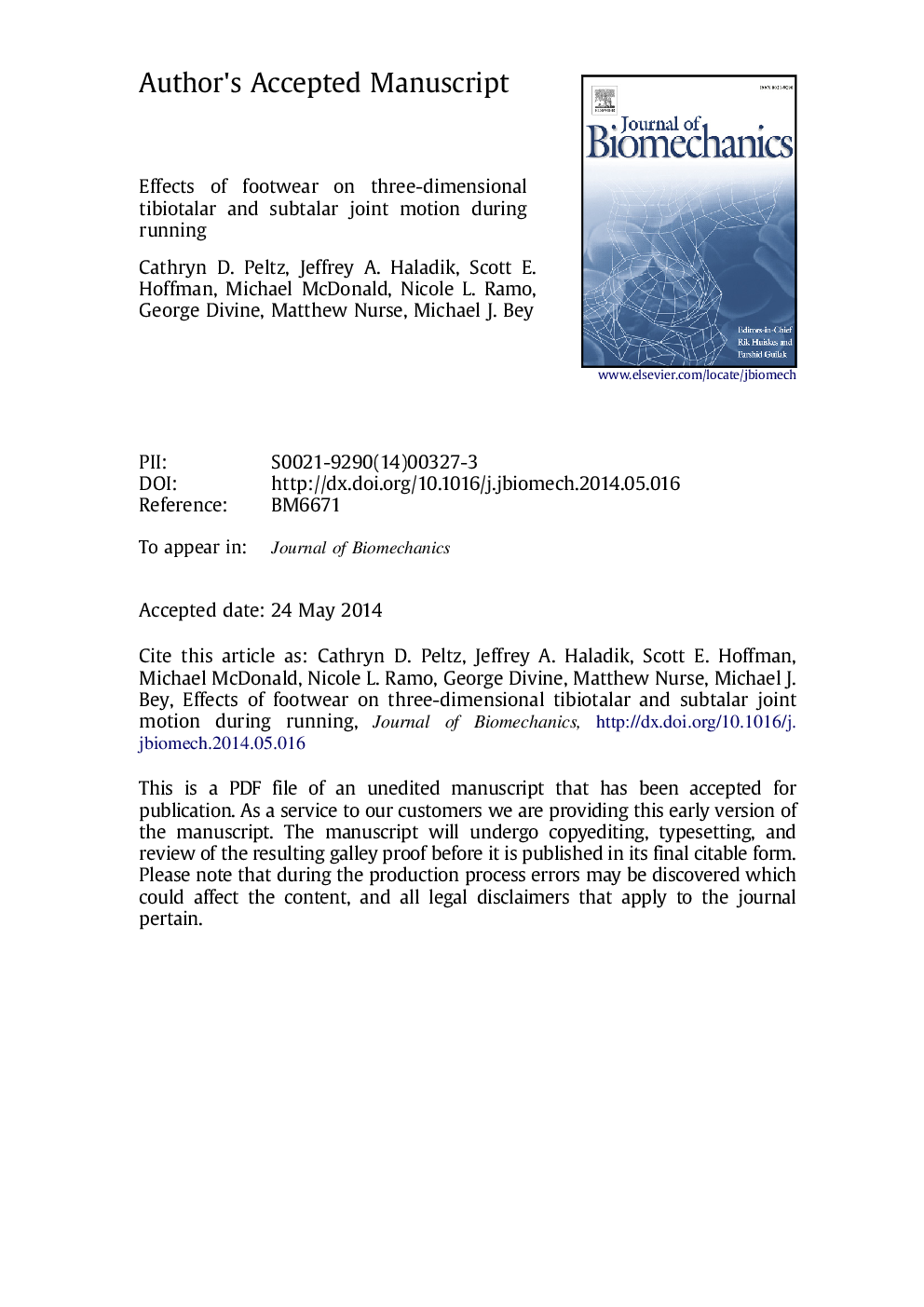| Article ID | Journal | Published Year | Pages | File Type |
|---|---|---|---|---|
| 10431840 | Journal of Biomechanics | 2014 | 27 Pages |
Abstract
Running is a popular form of recreation, but injuries are common and may be associated with abnormal joint motion. The objective of this study was to determine the effect of three footwear conditions - barefoot (BF), an ultraflexible training shoe (FREE), and a motion control shoe (MC) - on 3D foot and ankle motion. Dynamic, biplane radiographic images were acquired from 12 runners during overground running. 3D rotations of the tibiotalar and subtalar joints were quantified in terms of plantarflexion/dorsiflexion (PF/DF), inversion/eversion (IN/EV) and internal/external rotation (IR/ER). Across the early stance phase (defined as footstrike to heel-off), BF running demonstrated greater tibiotalar joint range of motion for PF/DF (28.2±8.3°) and IR/ER (7.0±1.4°) than the shod conditions (FREE: PF/DF=15.1±5.9°, IR/ER=4.8±2.1°; MC: PF/DF=15.0±6.2°, IR/ER=4.3±0.7°). Also at the tibiotalar joint, BF running resulted in a position significantly more plantarflexed (BF: 2.0±12.5°, FREE: 15.7±12.2°, MC: 16.5±9.3°) and internally rotated (BF: 12.9±4.5°, FREE: 10.7±4.3°, MC: 10.6±3.9°) at footstrike compared to both shod conditions. No differences were detected between the shod conditions at any point in the early stance phase at the tibiotalar joint. The MC condition demonstrated significant differences compared to FREE at several points throughout the early stance phase at the subtalar joint, with the greatest differences seen at 30% in PF/DF (MC â1.4±8.8°: FREE: â0.5±9.0°), IN/EV (MC â8.1±5.7°: FREE â6.3±5.5°) and IR/ER (MC â9.5±5.3°: FREE: â8.7±5.2°). These findings indicate that footwear has subtle effects on joint motion mainly between BF and shod conditions at the tibiotalar joint and between shod conditions at the subtalar joint.
Related Topics
Physical Sciences and Engineering
Engineering
Biomedical Engineering
Authors
Cathryn D. Peltz, Jeffrey A. Haladik, Scott E. Hoffman, Michael McDonald, Nicole L. Ramo, George Divine, Matthew Nurse, Michael J. Bey,
